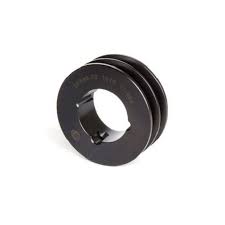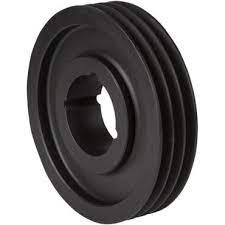Product Description
Founded in 1980, ZheZheJiang nshan Conveyor Machinery Co.,Ltd.is an innovativemanufacturing enterprise specializing in the production,design, sales and installation of bulk material conveying equipment.The company mainly provides belt conveyor, tubular belt conveyor, mobile belt conveyor, screw conveyor, Bucket Elevator, chain conveyor, scraper conveyor and other material handling conveying equipment. It also provides conveyor idlers rollers,conveyor drum pulleys, conveyor belts, belt cleaners, impact beds, take-up frame and other components. XINSHAN Conveyor has many years of experience in supplying to a diverse range of industries which includes coal, cement, steel iron, chemical, agricultural, power, mining, port, quarrying, mechanical & civil engineering, waste management & recycling. We have a professional R&D team with plenty technical patents. And we can produce conveyor products in different standards such as CEMA, JIS, ISO,AS, GB and so on. Also,our products have already qualified ISO9001, CE, SGS, BV certifications, Inaddition, XINSHAN has established friendly and cooperative relationships with ZheJiang Material Handling Research Institute Co. ,ltd (BMHRI) , CHINAMFG Research Institute (CCRI),HangZhou University of Science and Technology (TYUST), etc., so that the company’s research and development level has always been at the forefront of innovation in the field of bulk material transportation. XINSHAN Conveyor has became a CHINAMFG brand with great reputation for providing total conveyor confidence.
In order to expand the international market, we set up an export-oriented factory in2017-ZheJiang CHINAMFG Machinery Manufacturing Co. , Ltd., our products have been exported to more than 40 countries and regions.
| Certification: | CE, ISO |
|---|---|
| Pulley Sizes: | Type E |
| Manufacturing Process: | Casting |
| Material: | Carbon Steel |
| Surface Treatment: | Baking Paint |
| Application: | Chemical Industry, Grain Transport, Mining Transport, Power Plant |
| Samples: |
US$ 1/Piece
1 Piece(Min.Order) | |
|---|
| Customization: |
Available
| Customized Request |
|---|

Are there different types of spa pulleys, and how do they vary in spa applications?
Yes, there are different types of spa pulleys available, and they can vary in terms of design, materials, and specific applications within a spa system. Here’s a detailed explanation of the various types of spa pulleys and their variations in spa applications:
1. V-Belt Pulleys:
V-belt pulleys are one of the most common types of pulleys used in spa applications. They feature a V-shaped groove that matches the cross-section of V-belts, which are commonly used power transmission belts. V-belt pulleys provide reliable power transmission, high torque capacity, and are suitable for moderate to heavy-duty applications. They are often used in spa systems to transfer power from the motor to various components such as pumps, blowers, or jets.
2. Flat Belt Pulleys:
Flat belt pulleys, as the name suggests, have a flat surface for belt engagement. They are typically used with flat belts made of materials such as rubber or fabric. Flat belt pulleys are suitable for applications requiring moderate power transmission and are commonly used in spa systems for driving components like pumps or fans.
3. Timing Belt Pulleys:
Timing belt pulleys are designed to work specifically with timing belts, which have teeth on the inner surface. The teeth on the belt mesh with corresponding grooves on the pulley, enabling precise and synchronous power transmission. Timing belt pulleys are commonly used in spa applications where accurate timing and synchronization of components are required, such as in spa control systems or automated functions.
4. Idler Pulleys:
Idler pulleys are used to redirect or guide belts within a spa system. They do not transmit power but help maintain proper belt tension and alignment. Idler pulleys can be used in conjunction with other types of pulleys to ensure smooth operation and prevent belt slippage or excessive wear. They are commonly found in spa systems where multiple pulleys and belts are used, such as in complex pump or motor configurations.
5. Materials:
Spa pulleys can be made from various materials, and the choice of material depends on factors such as durability, resistance to corrosion, and compatibility with the spa environment. Common materials used for spa pulleys include stainless steel, aluminum, brass, or various types of plastics or polymers. Stainless steel and aluminum pulleys are often preferred for their corrosion resistance, while plastics or polymers may be used for their lightweight properties or chemical resistance.
6. Size and Configuration:
Spa pulleys come in different sizes and configurations to accommodate specific spa applications. The size of the pulley, including its diameter and width, is determined based on factors such as the power requirements, belt size, and desired speed ratio. Pulleys may have different numbers of grooves or teeth to match the number of belts or the desired timing of the system. The specific configuration and size of the pulleys are chosen to ensure proper power transmission, belt engagement, and compatibility with the overall spa system.
In summary, there are different types of spa pulleys, including V-belt pulleys, flat belt pulleys, timing belt pulleys, and idler pulleys. They can vary in terms of design, materials used, and specific applications within a spa system. The choice of pulley type, material, and size depends on factors such as the power requirements, belt type, desired speed ratio, and compatibility with the spa environment. Proper selection and use of spa pulleys are crucial for efficient power transmission and reliable operation of various components within the spa system.

Can spa pulleys withstand exposure to moisture and chemicals used in spas?
Spa pulleys are designed to withstand exposure to moisture and chemicals commonly used in spas. Here’s a detailed explanation:
1. Moisture Resistance:
Spa pulleys are typically constructed using materials that are resistant to moisture. Common materials used for spa pulleys include corrosion-resistant metals such as stainless steel or aluminum, as well as various types of plastics or polymers. These materials have inherent resistance to moisture and are less prone to rust or degradation when exposed to water or high humidity levels in the spa environment.
2. Chemical Compatibility:
Spas often use a variety of chemicals, such as sanitizers, pH adjusters, and water clarifiers, to maintain water quality. Spa pulleys are designed to withstand exposure to these chemicals without experiencing significant degradation or damage. The materials selected for spa pulleys are chosen for their chemical resistance properties. They are tested and chosen to ensure compatibility with the specific chemicals used in spas, reducing the risk of chemical-induced deterioration or failure.
3. Sealed and Protected Design:
Spa pulleys may incorporate design features that provide additional protection against moisture and chemical exposure. For example, pulleys may have sealed bearings or sealed housings to prevent water or chemicals from directly accessing critical components. This helps to prolong the lifespan of the pulleys and maintain their performance even in the presence of moisture or chemicals.
4. Regular Maintenance:
While spa pulleys are designed to withstand exposure to moisture and chemicals, regular maintenance is still necessary to ensure their longevity. This includes proper cleaning, inspection, and lubrication of the pulleys. Cleaning helps remove any accumulated debris or chemical residues that may affect the pulley’s performance. Regular inspection allows for early detection of any signs of wear or damage, enabling timely maintenance or replacement. Lubrication helps to reduce friction and wear, improving the overall performance and lifespan of the pulleys.
5. Manufacturer Recommendations:
It’s important to follow the manufacturer’s recommendations regarding the use and maintenance of spa pulleys. Manufacturers often provide specific guidelines on the materials used, maintenance procedures, and any limitations or precautions related to moisture and chemical exposure. Adhering to these recommendations ensures the pulleys perform optimally and withstand the spa environment effectively.
In summary, spa pulleys are designed to withstand exposure to moisture and chemicals used in spas. They are constructed using materials that are resistant to moisture and compatible with the chemicals commonly found in spas. Additionally, their design may incorporate features that provide extra protection against moisture and chemical exposure. Regular maintenance and following manufacturer recommendations are essential to ensure the longevity and reliable performance of spa pulleys in the spa environment.

What is a spa pulley, and how is it used in spa and hot tub systems?
A spa pulley is a component used in spa and hot tub systems to facilitate the movement and operation of various parts and functions. Here’s a detailed explanation of spa pulleys and their role in spa and hot tub systems:
A spa pulley is a wheel or disk-shaped component typically made of durable materials such as plastic or metal. It features a grooved or toothed surface designed to accommodate a specific type of belt, such as a V-belt or a timing belt. The belt wraps around the pulley, creating a connection between the motor or drive source and other components within the spa or hot tub system.
Spa pulleys are used in several key areas of a spa or hot tub system, including:
1. Pump Systems:
In spa and hot tub systems, pumps are responsible for circulating water, powering jets, and maintaining filtration. Spa pulleys are commonly used in pump systems to transfer the rotational power from the motor to the pump impeller. The pulley is connected to the motor shaft, and its rotation drives the pump impeller, creating water movement and pressure.
2. Blower Systems:
Blowers are often found in spa and hot tub systems to provide air for air jets, enhancing the hydrotherapy experience. Spa pulleys can be used to connect the blower motor to the blower fan. As the motor rotates, it drives the pulley, which, in turn, spins the blower fan, creating a flow of air into the air jets.
3. Control Systems:
Some spa and hot tub systems feature control panels or electronic systems that govern various functions, such as temperature control, lighting, or water feature activation. Spa pulleys may be utilized in these control systems to transfer rotational power from the motor or drive source to the components responsible for controlling these functions. This allows for the activation and adjustment of various features within the spa or hot tub.
4. Other Components:
Spa pulleys can also be found in other areas of spa and hot tub systems, depending on the specific design and configuration. They may be used in systems involving ozonators, waterfalls, or other accessories that require rotational power transfer from a motor or drive source.
Spa pulleys play a crucial role in ensuring the proper functioning of various components within a spa or hot tub system. They enable the transfer of rotational power from the motor to drive pumps, blowers, control systems, and other components, creating the desired water flow, pressure, and functionality.
It’s important to note that the specific type, size, and design of the spa pulley may vary depending on the manufacturer and the particular spa or hot tub system. It’s recommended to consult the system’s documentation or contact the manufacturer for accurate information on the proper selection, installation, and maintenance of spa pulleys.


editor by CX
2023-11-06